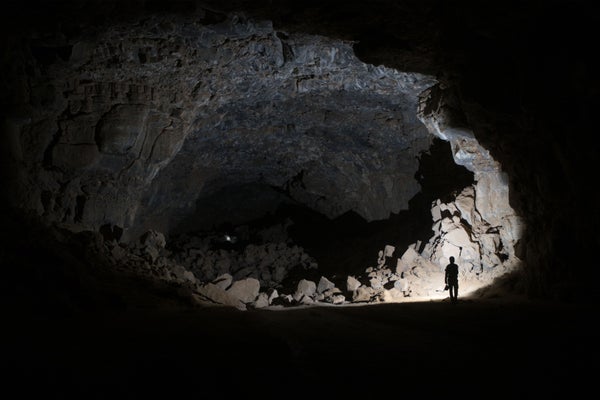Blue light absorption by pathogenic bacteria can lead to their death.
The language of light has many dialects. Bacteria—the planet’s oldest organisms—produce, sense, and respond to light in various ways that direct their existence. They convert information encoded by different light wavelengths into biochemical banter that drives their physiology, including reproduction, metabolism, and growth. In some cases, certain wavelengths of light delivered in just the right way act as a death sentence—a feature that makes bacterial death by illumination a promising approach to treating infections.
Burn wounds are particularly susceptible to infection. The standard of care for infected wounds involves antimicrobial treatment and debridement—the removal of dead and infected tissue. In some cases, extensive surgical debridement is needed. As microorganisms develop more resistance to antimicrobial drugs, these approaches are becoming less effective. Researchers search for innovative strategies to treat infected burns, including exposing wounds to blue light within the 400-470 nm wavelength range, which has known antimicrobial properties.1-5 Bacteria for which blue light is lethal have photoreceptors that sense the light and trigger toxic reactive oxygen species production and the destabilization of various cellular systems.2,6
In a recent study published in Photobiomodulation, Photomedicine, and Laser Surgery, scientists evaluated the antibacterial effect of blue light phototherapy against Pseudomonas aeruginosa—a common burn wound pathogen.7 They used in vitro assays and a human wound skin model to assess whether blue light therapy reduces the P. aeruginosa burden and identified the specific intensities and treatment times needed to maximize antibacterial effects.

Scientists explore phototherapy for antimicrobial resistant infections.
The researchers used colony-forming unit assays to track the number of bacteria growing in suspension in vitro after blue light treatment. They found that P. aeruginosa responded differently depending on the intensity and length of exposure to blue light in the 450-460 nm range. Delivering a higher intensity of blue light over the course of an hour was more effective than a lower intensity delivered for two hours. Doubling the intensity of light delivered over two hours was the most effective at reducing bacterial number over time. For the infected in vitro skin wounds—donor skin biopsies seeded with P. aeruginosa—the latter was the only strategy that showed a significant antibacterial effect.
Working out the nuances of a treatment regimen in vitro is an important first step towards future clinical translation. While a two-hour light therapy session is an impractical addition to current clinical wound care workflows, combining blue light therapy with other drugs may reduce the time needed to achieve similar antibacterial effects in the future. As this and similar therapies advance to clinical trials, researchers will continue to tap into the bacterial language of light in their quest to integrate phototherapy into existing burn wound care protocols.
References:
- P.J. Gwynne, M.P. Gallagher, “Light as a broad-spectrum antimicrobial,” Front Microbiol, 9:119, 10.3389/fmicb.2018.00119, 2018.
- A.J. De Lucca et al., “Blue light (470 nm) effectively inhibits bacterial and fungal growth,” Lett Appl Microbiol, 55(6):460-6, 2012.
- S.W. Josewin et al., “Inactivation of Listeria monocytogenes and Salmonella spp. on cantaloupe rinds by blue light emitting diodes (LEDs),” Food Microbiol, 76:219-25, 2018.
- V.V. Bumah et al., “The bactericidal effect of 470-nm light and hyperbaric oxygen on methicillin-resistant Staphylococcus aureus (MRSA),” Lasers Med Sci, 30(3):1153-59, 2015.
- I. Plattfaut et al., “Characterization of blue light treatment for infected wounds: antibacterial efficacy of 420, 455, and 480 nm light-emitting diode arrays against common skin pathogens versus blue light-induced skin cell toxicity, Photobiomodul Photomed Laser Surg, 39(5):339-48, 2021.
- J. Hadi et al., “Antimicrobial blue light versus pathogenic bacteria: mechanism, application in the food industry, hurdle technologies and potential resistance,” Foods, 9(12):1895, 2020.
- M.D. Leder et al., “Phototherapy of Pseudomonas aeruginosa-infected wounds: preclinical evaluation of antimicrobial blue light (450–460 nm) using in vitro assays and a human wound skin model,” Photobiomod Photomed Laser Surg, 40(12):800-09, 2022.















